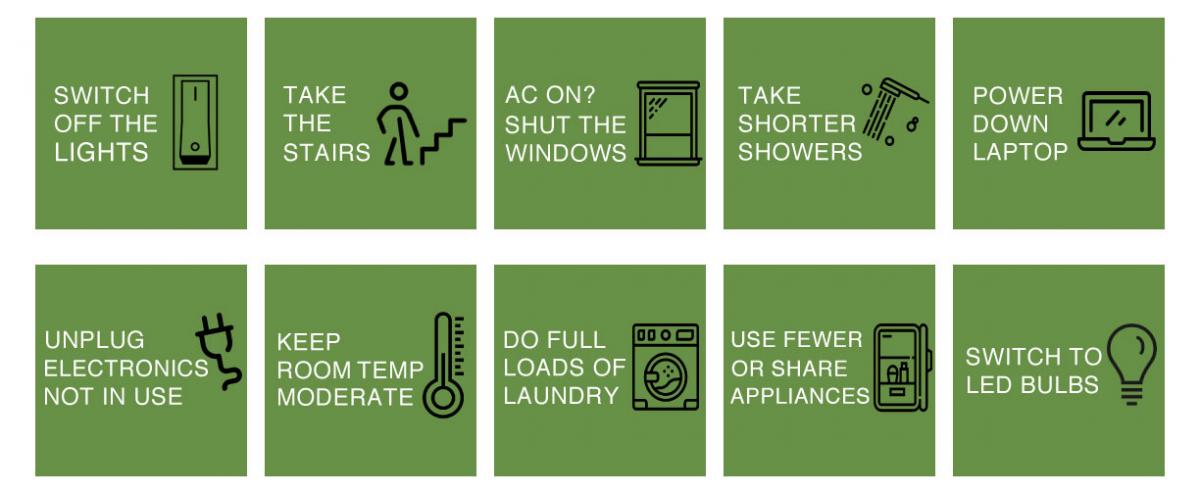As the world becomes more aware of the importance of sustainability, schools are under pressure to do their part in reducing their carbon footprint. But how can schools reduce their carbon footprint without compromising education quality or breaking the bank?
Table of Contents
How Can Schools Reduce Their Carbon Footprint?
Switching to renewable energy sources is one way how can schools reduce their carbon footprint. Not only is it better for the environment, but it can also save the school money in the long run.
There are many renewable energy sources to choose from, including solar, wind, and hydropower.
Solar power is becoming increasingly popular, as it is a clean and renewable source of energy that can be used to power entire buildings. Many school districts are already using solar panels to power school buildings, and more are considering making the switch.
Wind power is another renewable energy source that is becoming more popular. Wind turbines can be used to generate electricity, and many school buildings are now using them to supplement their energy needs.
Hydropower is another option for schools looking to reduce their carbon footprint. Hydropower plants use the energy of moving water to generate electricity, and many schools are now using them to power their buildings.
Encourage Sustainable Commuting Options
One way school districts can reduce their carbon impact is by encouraging sustainable commuting options among students and staff.
There are a number of sustainable commuting options available, such as carpooling, biking, and taking public transportation. By encouraging the use of these options, schools can significantly reduce their carbon impact.
Carpooling is a great way to reduce carbon emissions from transportation. When multiple people carpool together, they can share the cost of fuel and reduce the number of vehicles on the road. This not only reduces greenhouse gases but also helps to reduce traffic congestion.
Biking is another great option for sustainable commuting. Not only does biking emit zero emissions, but it’s also a great form of exercise.
Taking public transportation is another sustainable commuting option that can help reduce the emission of greenhouse gases. By taking public transportation, students and staff can save money on gas and reduce the number of vehicles on the road as well.
Encouraging sustainable commuting options is a great way for school districts to reduce their carbon footprint. By promoting these options, school leaders can make a positive impact on the environment and the health of their students and staff.
Implement Green Building Practices
It’s no secret that the construction industry has a huge impact on the environment. In fact, the building sector is responsible for a whopping 39% of global carbon dioxide emissions.
But what many people don’t realize is that the way we build our schools can have a big impact on the environment too. There are a number of ways that school buildings can reduce greenhouse gas emissions and make a positive impact on the environment.
One way is by implementing green building practices. Green building is an approach to designing and constructing buildings that minimize their negative impact on the environment.
This includes using sustainable materials, minimizing waste, and maximizing energy efficiency. There are many benefits to green buildings, both for the environment and for the building occupants.
Green school buildings can reduce energy consumption, water use, and carbon emissions. They can also improve indoor air quality, reduce noise pollution, and provide better thermal comfort.
All of these benefits are great news for the environment. But they’re also great news for schools, which often face tight budgets and need to do more with less.
Green building practices can help school districts save money on running costs. They can also create a healthier and more comfortable learning environment for students and staff.
 (Source)
(Source)
Promote Waste Reduction and Recycling Programs
As we all know, the world is facing an environmental crisis. The amount of waste we produce is increasing at an alarming rate, and much of this waste ends up in a landfill.
This is having a devastating effect on the planet, and we need to find ways to reduce our waste and recycle more. One way to do this is to promote waste reduction and recycling programs in schools.
By teaching children about the importance of reducing waste and recycling, we can help them to make more sustainable choices in their everyday lives.
- Encourage students to bring reusable water bottles and lunch boxes to school.
- Provide recycling bins for paper, plastic, and metal.
- Teach students about the importance of reducing, reusing, and recycling.
- Organize school-wide litter picks and campaigns to reduce littering.
- Work with local businesses and community groups to promote waste reduction and recycling.
By taking these steps, we can help to make a difference and protect our planet for future generations.
Educate Students and Staff About Sustainability
As we become more aware of the impact our actions have on the environment, it’s important to think about how can schools reduce their carbon footprint. One way to do this is by educating students and staff about sustainability.
By doing so, we can empower them to make changes in their own lives that will have a positive impact on the environment.
Some simple ways schools can reduce greenhouse gas emissions include:
- Encouraging students and staff to carpool or use public transportation.
- Educating students and staff on the benefits of less meat consumption.
- Implementing recycling programs.
- Educating students and staff about energy conservation.
These are just a few of the many ways schools can reduce their carbon footprint. By educating students and staff about sustainability, we can make a difference in the fight against climate change.
Conclusion
There are a number of ways how can schools reduce their carbon footprint without compromising education quality or breaking the bank. One way is to switch to renewable energy sources, such as solar or wind power.
Another way is to encourage sustainable commuting options, such as carpooling or biking. Additionally, schools can implement green building practices, promote waste reduction and recycling programs, and educate students and staff about sustainability.
By taking these steps, schools can make a significant impact in reducing their carbon footprint and promoting sustainability for future generations.





